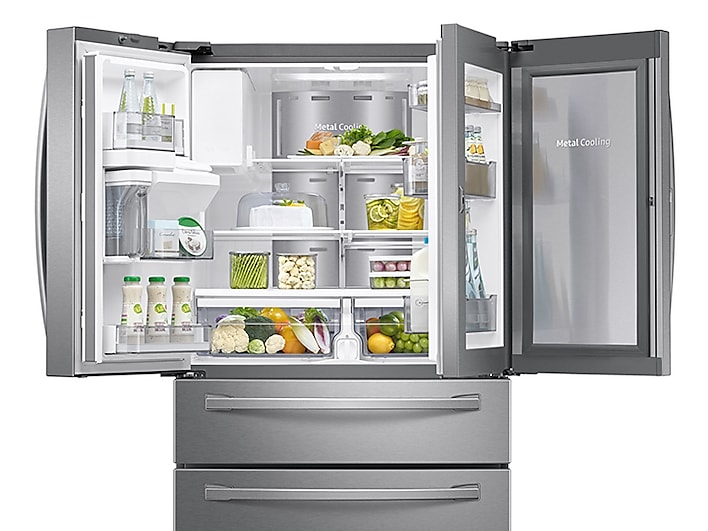Modern homes and businesses rely heavily on reliable technology: refrigerators to keep food fresh, clocks to keep us on schedule, and controllers to maintain cold storage. But even the best devices can present challenges. The good news is that many common issues have clear solutions if you know where to look. Here are three practical guides to help you troubleshoot a Samsung fridge, an Oregon Scientific clock, and a Dixell refrigeration controller.
How to Fix Cooling Problems in a Samsung Fridge
A refrigerator is the heart of every kitchen, and models like the Samsung RF28R7351SR are packed with smart features. Still, owners sometimes find that the fridge isn’t cooling properly, or certain compartments feel warmer than expected.
How to Check Temperature Settings
Sometimes the issue is simply incorrect settings. Open the control panel and verify that the fridge temperature is set to around 37°F (3°C) and the freezer to 0°F (-18°C). Accidentally raising these numbers by a few degrees can affect cooling.
How to Clean the Condenser Coils
Dusty coils are a common cause of weak cooling. Move the refrigerator away from the wall, unplug it, and vacuum the coils at the back or underneath. Clean coils allow heat to dissipate properly and restore cooling performance.
How to Inspect the Door Seals
A damaged or dirty gasket can let warm air inside. Wipe down the seals with warm soapy water and check for cracks. If the seals don’t hold firmly when you close the door, replacement may be necessary.
Why the Manual Helps
Some Samsung models include special features like twin cooling systems or flex zones. The manual samsung fridge explains how to troubleshoot these model-specific technologies, giving step-by-step directions for settings, resets, and error codes.

How to Synchronize the Oregon Scientific RM806 Clock
The Oregon Scientific RM806 is an atomic radio-controlled clock, but owners sometimes notice it won’t update or sync correctly with the official atomic signal.
How to Improve Signal Reception
Radio signals can be blocked by walls, electronics, or even local interference. Place the clock near a window and away from televisions, routers, or large metal objects. Synchronization usually works best overnight when interference is lower.
How to Perform a Manual Reset
If the clock doesn’t sync on its own, press and hold the reset button until the display flashes. This forces the unit to search for the atomic signal again. The oregon scientific clock rm806 manual provides the exact button sequence to follow, ensuring you don’t erase stored settings.
How to Set the Time Manually
If you live in a region with poor signal coverage, manual setup may be the best option. Use the mode button to cycle through hours, minutes, and date settings, adjusting with the up or down arrows. The manual also covers how to enable or disable daylight savings adjustments depending on your country.
How to Maintain Accuracy
Even when set manually, the RM806 remains accurate thanks to its quartz mechanism. Regularly check it against a trusted time source and make small corrections if necessary.
How to Interpret Dixell Controller Error Codes
Dixell refrigeration controllers, such as the Dixell XR60CX, are widely used in commercial kitchens and cold storage rooms. These devices monitor temperature and activate cooling or defrost cycles automatically. When error codes appear on the display, they can cause alarm, but most have straightforward fixes.

How to Understand Common Codes
-
E1 indicates a problem with the temperature probe connection. Check the wiring and replace the probe if necessary.
-
E2 refers to a defrost sensor fault, often caused by ice buildup around the probe. Defrost and inspect before replacing.
-
EE means parameter corruption, which usually requires resetting to factory settings.
How to Reset the Controller
Press and hold the “SET” button until the menu appears. Navigate to the reset option (often shown as “rSt”), confirm, and allow the controller to restart. The dixell controller manual provides detailed instructions on safe resets without affecting wiring or external systems.
How to Calibrate Temperature Readings
If the controller’s displayed temperature doesn’t match actual conditions, adjust the offset. For example, if the display shows 6°C but the storage area measures 4°C, set the offset to -2. The manual contains parameter charts that explain how to fine-tune readings.
How to Prevent Frequent Errors
Regular maintenance helps avoid recurring issues. Clean probes, check wiring for corrosion, and don’t overload refrigeration units. Following the preventive advice in the manual extends the controller’s lifespan and keeps cold storage stable.
Lessons from Everyday Appliance Issues
Appliances and devices may look complicated, but most problems have simple solutions. Checking settings, cleaning parts, or performing a reset can restore normal function in minutes. The manual samsung fridge guides homeowners through advanced cooling features and troubleshooting codes. The oregon scientific clock rm806 manual explains how to synchronize with atomic signals or set the time manually. And the dixell controller manual helps technicians interpret codes, calibrate sensors, and keep refrigeration systems reliable.
Every time one of these devices falters, it’s a reminder of the value of manufacturer manuals. They turn frustration into empowerment, giving clear steps that save both time and money while keeping homes and businesses running smoothly.


